| home rebecca agnes | books | texts | links | bio | cv |
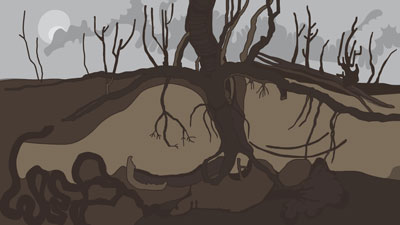 |
 |
 |
GOTHIC / 2D Animation, 5", format 16:9. Music by Jermozero. 2012. play video low resolution |
I WAS HERE / 2D Animation, 90 sec, format 16:9. 2012. |
One year on earth, one day on another planet / 2D Animation, 6", format 16:9. Music by Foka. 2011. |
| IT / Il video One year on earth, one day on another planet è, come suggerisce il titolo, un calendario. Nella parte destra dello schermo 365 disegni scorrono uno dopo l’altro. Rappresentano giorni, ove i numeri sono sostituiti da disegni di organismi vegetali inventati, come un calendario personale che utilizza simboli invece della divisione convenzionale del tempo. Sullo sfondo è visibile una montagna rovesciata, il paesaggio di un altro pianeta. Non c’è movimento, solo i cambiamenti di luce sulla superficie delle rocce, dall’alba al tramonto. Questo è il tempo necessario al pianeta per fare un giro completo sul proprio asse. Un giorno su questo pianeta corrisponde ad un anno solare. Un tempo così lungo che smette di avere senso per noi. | ENG / The video One year on earth, one day on another planet is, as its title suggests, a calendar. On the right side of the screen 365 drawings flow one after the other. They represent days, but numbers are replaced with sketches of invented vegetable organisms, like a personal calendar that uses symbols instead of the conventional division of time. On the background an upside-down mountain range is visible. That is the landscape of another planet. There is no movement, only the changes of the light on the rock surface, from dawn till sunset. That is the time that the planet needs to spin around its own axis. A day on that planet corresponds to a solar year. Such a long span of time stops making sense for us. Time and how we measure it is a convention that changes and that has a meaning only inside a system of reference. | DE / Wie der Name suggeriert, ist das Video One year on earth, one day on another planet ein Kalender. Auf einer Seite des Bildschirms folgen 365 Bilder aufeinander. Sie repräsentieren die einzelnen Tage, jedoch sind deren Nummern durch Skizzen erfundener Pflanzenorganismen ersetzt - ein persönlicher Kalender der Symbole anstelle der konventionellen Zeiteinteilung verwendet. Im Hintergrund wird ein auf den Kopf gestelltes Gebirgspanorama sichtbar, die Landschaft eines anderen Planeten. Es gibt dort keine Bewegung, nur das von Sonnenaufgang bis Sonnenuntergang wechselnde Licht auf den Felsoberflächen. Dies verkörpert die Zeit, die der Planet benötigt, um sich um seine eigene Achse zu drehen. Ein Tag auf diesem Planeten entspricht einem Sonnenjahr. Eine so lange Zeitspanne verliert für uns jeden Sinn. Zeit, und wie wir sie messen, ist eine Konvention, die sich verändert und die nur innerhalb eines Referenzsystems Bedeutung hat. |
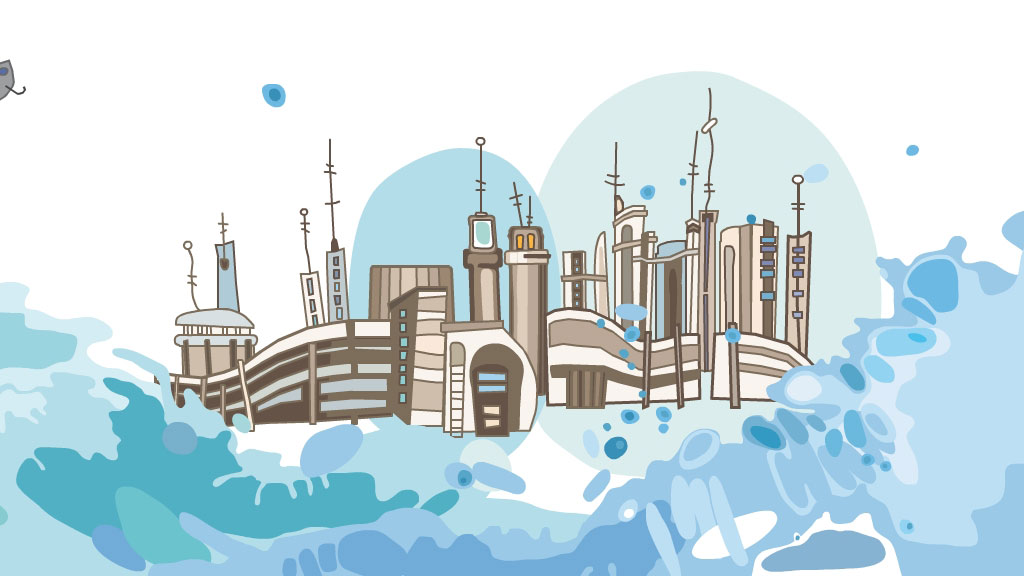 |
 |
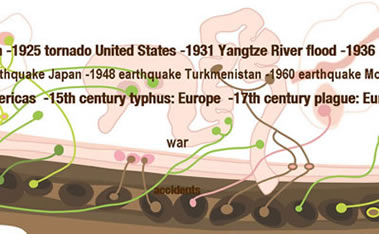 |
MIELE / 2D Animation, 4:02, format 16:9. Music by Jermozero. 2010. |
waiting for the next meteorite to come / video animation in 2D, 1,18", 2010. |
an unbroken line / video animation in 2D, format 16:9, 6”, 2009 |
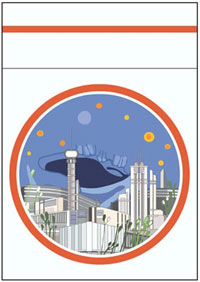 |
 |
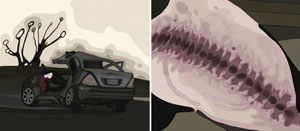 |
Urania Video animation, loop, 2009. not available |
The Big Bean that landed on Earth / Video animation, 6”, music by Jermozero, 2008. |
Now wait for last year / Video animation, double channel projection, 4.06”, music by Jermozero 2007 |
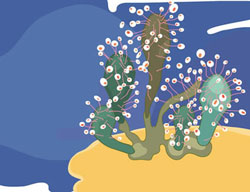 |
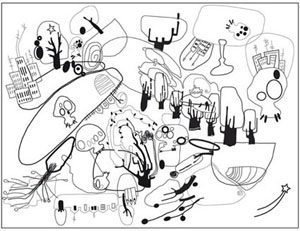 |
|
A Short Trip on the Other Side of the Galaxy, Where Pods Grow Before Falling on Earth / Video animation, 6”, music by Jermozero, 2006. |
Imploding Universes, No One Can See / Video animation, 6”, music by Jermozero, 2005. |
|
| IT / Uno dei tratti ricorrenti di molta letteratura fantascientifica “classica” è il caratterizzare o il visualizzare l’alieno come qualcosa di vegetale. Dall’invasione degli ultracorpi ai pomodori assassini il genere è sempre stato ricco di esseri ispirati al modo vegetale. Un altro scenario ricorrente è quello di un mondo dove la civiltà umana è scomparsa e le città della Terra vengono inghiottite da una natura esuberante e rigogliosa. Queste letture hanno sempre avuto un forte richiamo su di me, e hanno formato il mio universo visuale. Nei miei lavori video gli esseri umani sono un’assenza, l’unica traccia che ne rimane sono architetture fantastiche, e gli unici veri protagonisti sono baccelli (pod), funghi, fagioli e organismi monocellulari. Tutti questi esseri sono minuscoli oppure invasivi, lenti nei loro movimenti oppure velocissimi nell’apparire per poi scomparire chissà dove. La loro vitalità richiama la nostra attenzione, è un invito a considerare in modo differente il reale di cui abbiamo esperienza. La natura, che ci sembra tanto vicina, è in vero un universo impenetrabile al nostro sguardo. Come noi stessi siamo “universi” indipendenti l’uno dall’altro, coerenti con le nostre regole interne, ma non necessariamente aperti verso l’altro o capaci di comunicare con esso. Quello che vediamo, quello che ricordiamo, quello che è documentato è per noi reale. Allo stesso tempo la realtà sfugge a queste limitazioni, perché esistono cose che neanche riusciamo a immaginare. E accadono in ogni istante miriadi di eventi senza che ce ne accorgiamo. Questo non può, in assoluto, togliere valore a questi accadimenti, però è come se non fossero mai avvenuti perché non permangono tracce sensibili.
Per trovare gli alieni, non è necessario esplorare lo spazio alla ricerca di altri pianeti, andare lontano e perdersi fra le stelle. A volte è sufficiente interrogarsi sulla misteriosa vita dei funghi, e sperare che non si stiano preparando silenziosamente a conquistare la Terra. |
ENG / One of the leitmotifs of a consistent part of science fiction literature is the characterization or visualization of the alien as some vegetable being. From the Invasion of the Body Snatchers to killer tomatoes the genre has always been rich in creatures inspired by the vegetable world. Another recurring scenario is a world where there are no more human beings and cities on earth are swallowed by an exuberant and luxuriant nature. These readings have always had a strong appeal to me, and moulded my visual universe. In my works human beings are missing, the only trace left are fantastic architectures, and the only protagonists left are pods, mushrooms, beans and unicellular organisms. All these beings are tiny yet invasive, slow in their movements yet amazingly quick at showing up where we least expect them to. Their vitality captures our attention, it is an invitation to consider the things we have a direct experience with in a different way. Nature, that seems so close to us, is in reality a universe that cannot be penetrated by our eyes. We too are ''universes'' independent from one another, coherent with our internal rules, but not necessarily open to the other or able to communicate with it. What we see, what we remember, what is documented is for us real. At the same time, reality escapes these limitations, because there are things whose existence we cannot even fathom. And every second a million things goes on without us even noticing. This can't take value away from these events, but it is indeed as if they never happened because there are no perceptible traces. To find aliens, we don't have to explore the outer space in search of other planets, to go far away and to get lost among stars. At times it is enough to wonder about the mysterious life of mushrooms, and hope they are not silently getting ready to take over the earth. |